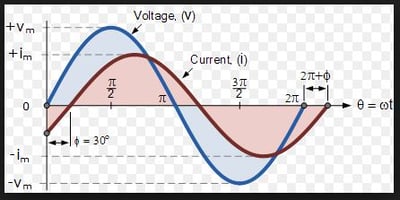
To understand the National Electrical Code (NEC), one must be aware of the electrical engineering fundamentals. Let’s start with the circuit.
.jpg?width=300&name=SnipImage%20(3).jpg) There are two types of electrical circuits: Direct Current (DC) and Alternating Current (AC). These circuits are comprised of resistors, capacitors and inductors.
There are two types of electrical circuits: Direct Current (DC) and Alternating Current (AC). These circuits are comprised of resistors, capacitors and inductors.
Almost every electrical load is a combination of these building elements. Each one of these elements “behaves” differently in response to current and voltage.
The most important laws that govern the behavior of these elements are Ohm’s Law and Kirchhoff’s Laws. These laws are used to perform circuit analysis.
But before we discuss these laws, let’s define a few electrical terms and units.
- Alternating Current (AC) – Current flowing from a source that can be represented by a sine wave, indicating current flowing both directions.
- Amperes or Amps (A) – The amount of charge flowing past a given point per unit of time. 1 Amp = 1 Coulomb / second
- Cycles – Number of times a complete sine wave occurs.
- Direct Current (DC) – Current flowing from a source which does not change polarity, indicating current flowing in one direction.
- Farad (F): Unit of Capacitance. Farad = Coulomb / Volt
- Henry (H): Unit of Inductance. Henry = (Volt x second) / Amp
- Hertz (Hz): Unit of Frequency. 1 Hertz = 1 cycle / 1 second
- Joules (J): Unit of Energy. 3.60 x 10 6 Joules = 1 kWh
- Ohms: Unit of Resistance. Ohm = Volt / Amp
- RMS – Root Mean Square value
- Volts (V) – A measure of the difference in electrical potential between two points. 1 Volt = 1 Joule / 1Coulomb
- Watts (W) – unit of Power. 1 Watt = 1 Joule / 1 second
.jpg?width=300&name=SnipImage%20(4).jpg) Every circuit needs a power source. As stated, the two types of circuits reflect their power source: Alternating Current (AC) and Direct Current (DC).
Every circuit needs a power source. As stated, the two types of circuits reflect their power source: Alternating Current (AC) and Direct Current (DC).
Direct Current (DC) maintains the same polarity, both positive and negative and never changes with time. In contrast, Alternating Current (AC) changes polarity with time at a defined rate (aka cycle or frequency)..jpg?width=400&name=SnipImage%20(1).jpg) In the United States, the frequency is 60 Hz. This means the electrical circuit changes polarity 60 times per second.
In the United States, the frequency is 60 Hz. This means the electrical circuit changes polarity 60 times per second.
So next time you turn on a light switch, the light intensity changes from dark (zero) to maximum brightness, then back to zero before reversing its polarity to return to maximum brightness then back to zero. This cycle is then repeated at the rate of 60 cycles per second. This rate is too fast for the human eye to detect so maximum brightness is seen until the light is switched off..jpg?width=400&name=SnipImage%20(2).jpg) In any circuit, the current will “follow” the voltage. Depending on the circuit type, the current will be either in phase with the voltage as in a Resistive Circuit or out-of- phase with the voltage as in a Capacitive or Inductive Circuit. In a Capacitive Circuit, the Voltage LAGS the Current, but in an Inductive Circuit, the Current LAGS the Voltage.
In any circuit, the current will “follow” the voltage. Depending on the circuit type, the current will be either in phase with the voltage as in a Resistive Circuit or out-of- phase with the voltage as in a Capacitive or Inductive Circuit. In a Capacitive Circuit, the Voltage LAGS the Current, but in an Inductive Circuit, the Current LAGS the Voltage. The angle between the voltage and current is called the Phase Angle. Any sine wave that does not pass through zero when time = 0 has a phase shift.
The angle between the voltage and current is called the Phase Angle. Any sine wave that does not pass through zero when time = 0 has a phase shift.
In any electrical circuit, you have two terminals. The current flows from one terminal to the other. The conventional flow of current is from the positive (+) terminal to the negative (-) terminal. But since electrons, in fact, flow from the negative (-) terminal to the positive (+) terminal there is another type of flow, electron flow.
In the next blog post, we will address the difference between Alternating Current (AC) and Direct Current (DC) power sources, move on to the elements of circuits (resistors, capacitors and inductors including parallel circuits and transient analysis), then Ohm’s law and Kirchhoff’s laws as they relate to circuit analysis.



